Little Known Pollinators
The pollinators that live in our native plant communities and around our homes are as important (if not more important) as the black bear or the gopher tortoise.
Without these insects to pollinate our native plants neither bear nor tortoise would have anything to eat as the saw palmetto and gopher apple would be unable to produce any fruit. Not only are they important to the natural ecosystems of Florida, but they also pollinate our vegetables … providing us with food.
Insect pollinators include bees, mosquitoes, wasps, beetles & flies, as well as the familiar butterflies and moths.
Bee Flies (Bombyliidae family)
The Large Bee Fly (Bombylius spp.) looks like a furry mosquito on steroids.
Their average size is 1/2 inch in length.
The adult frequents fields and open meadows in search of nectar.
The larva are parasitic on solitary bees. The female follows a solitary bee to her nest, waits for the bee to leave, then lays a single egg in the tunnel.
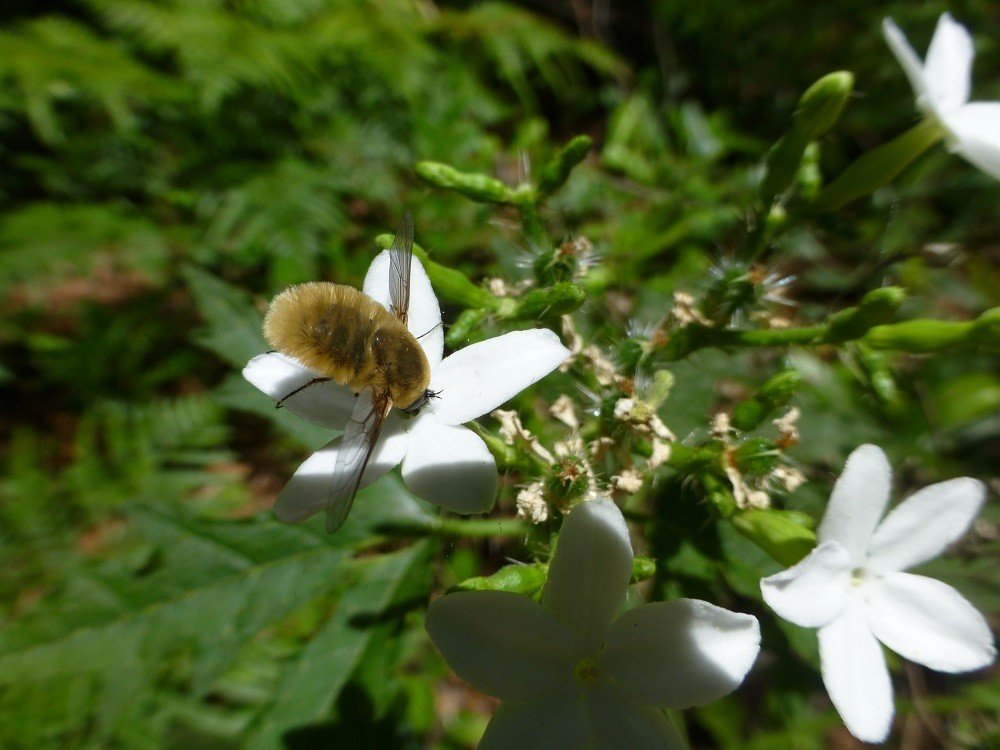
A Progressive Bee Fly (Exoprosopa spp.) looks like a furry house fly.
The average size is 1/2 inch in length.
Their preferred habitat is meadows, fields, and bare ground.
The adult drinks nectar and the larva are parasitic preferring robber fly larvae, but also prey on bees, wasps, and ants. The female lays eggs in her prey’s nests alongside their larva and when the larva hatch they eat the other larva and the meal its provider left for it.
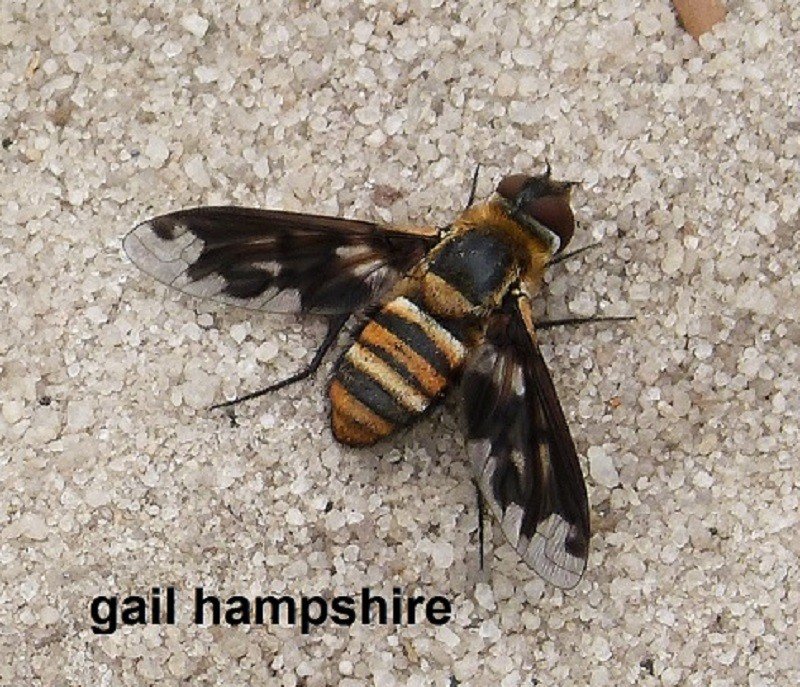
Hover Flies (Syrphidae family)
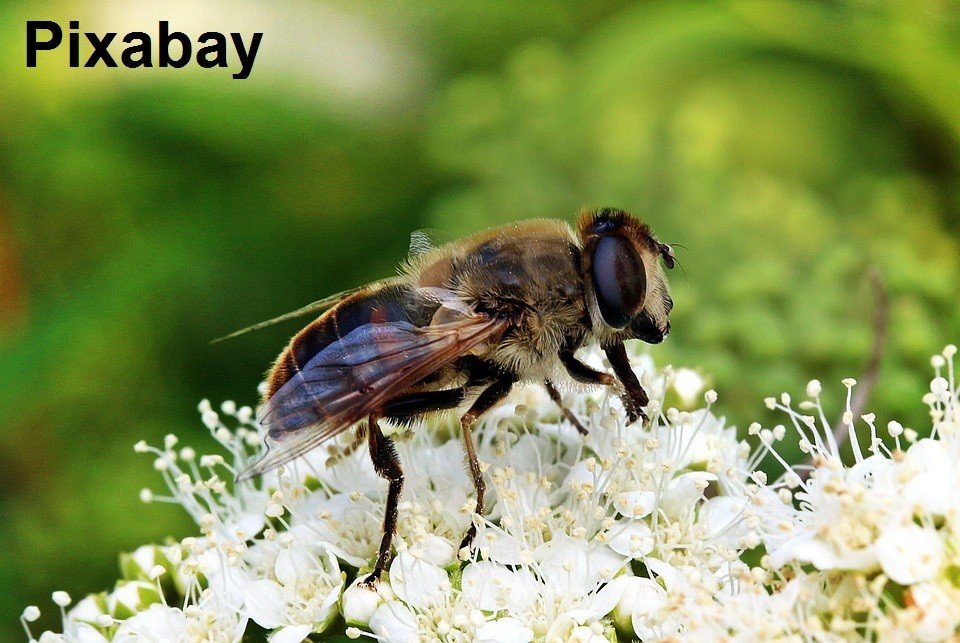

The Drone Fly (Eristalis tenax) resembles a honey bee, however, there is no waist between the thorax and abdomen.
Their average size is 5/8 inch in length.
Their preferred habitat is meadows and fields.
The adults feed on nectar and pollen.
Their eggs are laid in crevices near stagnant water and when they hatch they feed on organic matter.

The American Hoverfly (Eupeodes americanus) is brown with yellow cross bands.
Its average size is 3/8 inch in length.
The adults drink nectar and the larva prey on aphids and scale insects.
Their preferred habitat is meadows and fields.
The eggs are laid on aphid infested foliage.
The larva are pale gray and slug like and pupate in leaf litter.
As their name states … they will hover directly in front of your face if you’re in their territory, but they will not sting you … only intimidate you.
Horse and Deer Flies (Tabanidae family)
The American horse fly (Tabanus americanus) is a huge fly with an average size of 1 1/8 inch in length.
The male eats pollen and drinks nectar, and the female sucks blood from mammals.
Their preferred habitat is swamps, marshes and ponds.
Their eggs are laid on plant material overhanging fresh water.
The larva feed on aquatic insects.
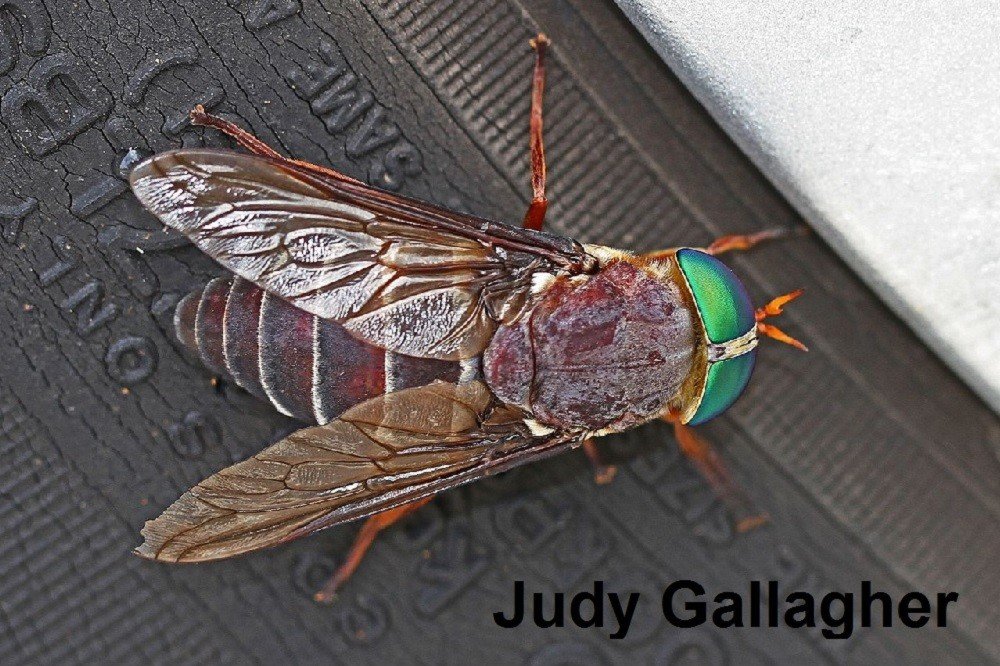
The Deer Fly (Chrysops spp.) is a stout broad headed fly.
Its average size is 5/8 inch in length.
The male drinks nectar and the female sucks blood from mammals.
Their preferred habitat is woodlands, meadows and roadsides near water.
The eggs are laid on plant material just above the water.
The larva feed on aquatic insects and pupate in the mud.
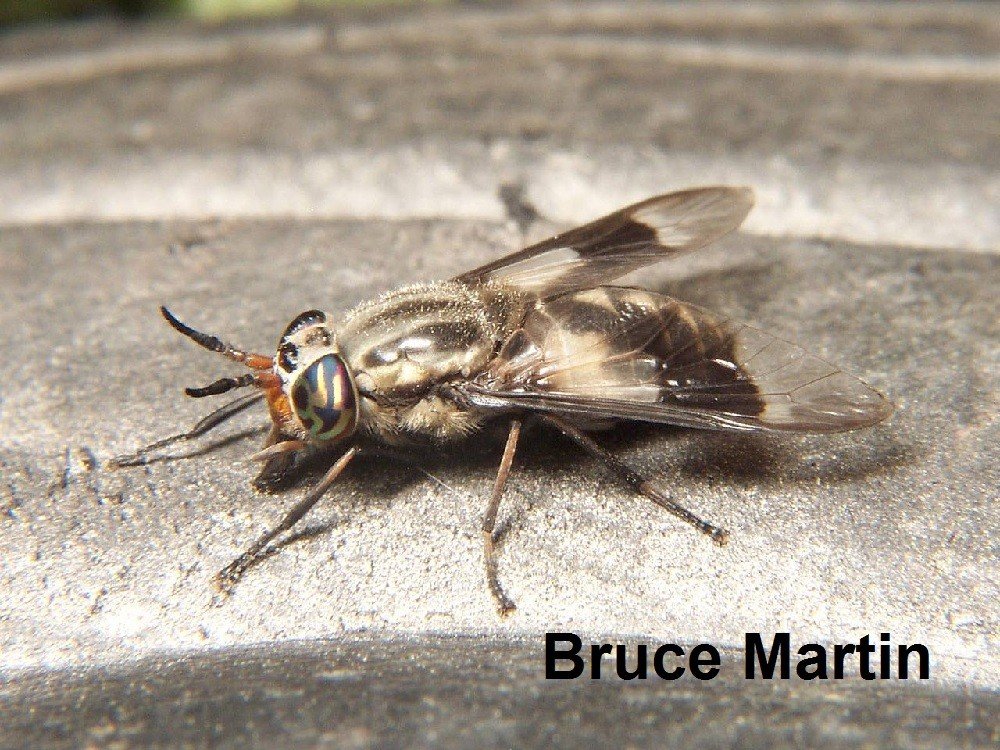
Vespid Wasps (Vespidae family)
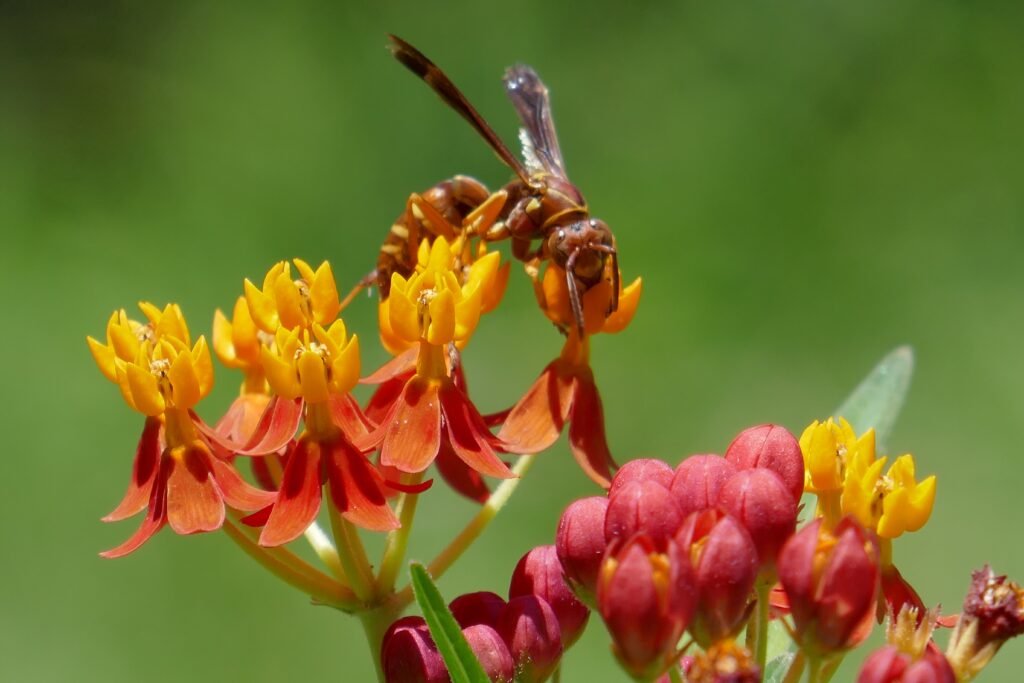
The Paper Wasp’s (Polistes spp.) average size is 1 inch in length.
The adults drink nectar and the juice from rotting fruit.
Their preferred habitat is meadows, fields and gardens.
The larva feed on insects. The adults construct a paper like structures which cells made to house the larva.
Paper wasps are much more tolerant of disturbances than yellow jackets or hornets, but will still attack without any provocation other than walking by a nest.
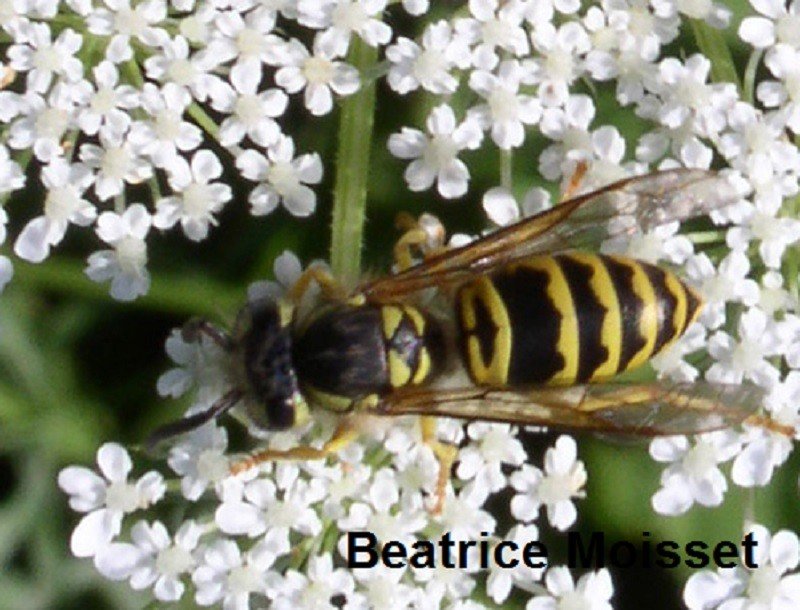
The Yellow Jacket (Vespulas spp.) has a stout body with black and yellow stripes.
Average size is 5/8 inch in length.
The adults drink nectar.
The larva feed on insects pre-chewed by the adults. Preferred habitat is meadows and forest edges.
Nests are built underground, or in stumps, or fallen logs. The nests are large comb like structures similar to honey bee combs. Yellow jackets sting without any provocation and vibrations from mowing equipment will set them into a frenzy immediately. They are not safe in a green space with children or pets.
Sphecid Wasps (Sphecidae family)
The Florida Hunting Wasp (Palmodes dimidiatus) has an average size of 7/8 inch in length.
The adults drink nectar and the larva feed on camel crickets and long horned grasshoppers.
Their preferred habitat is fields and woods.
The female excavates a short burrow in the earth and places an anesthetized victim in the burrow with a single egg and then seals the entrance. They seem to really like spiders as their prey.
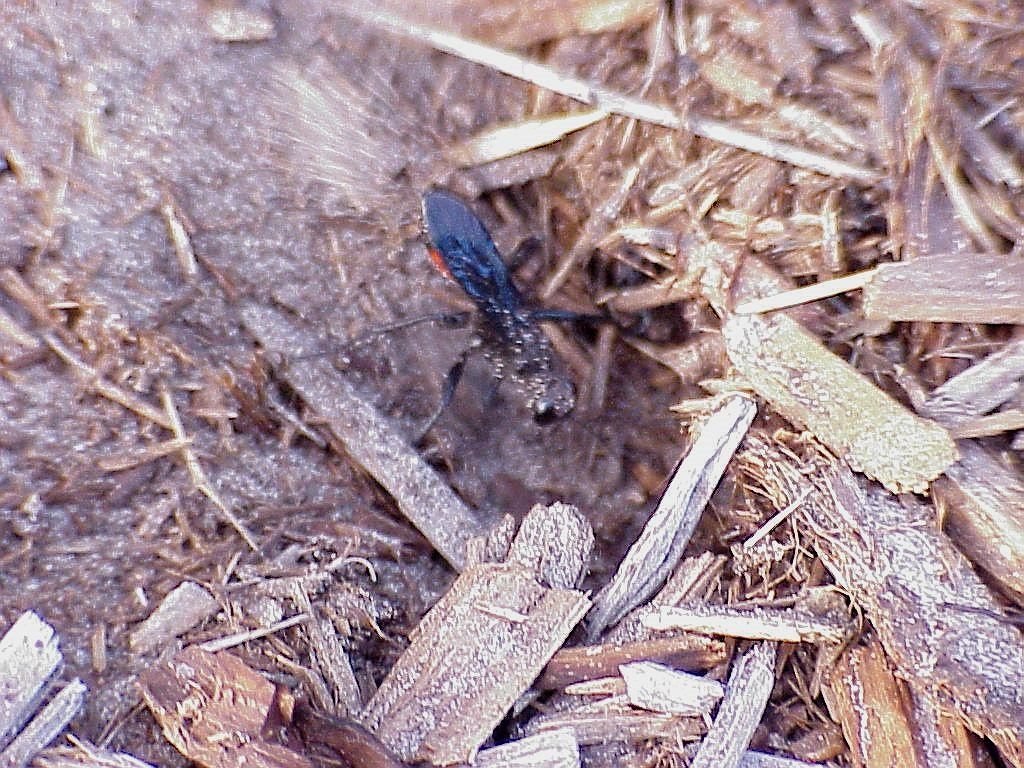
The Cicada Killer (Sphecius speciosus) has an average size of 1 5/8 inches in length.
The adults drink nectar and their larva feed on cicadas.
Their preferred habitat is forest edges and city parks.
Burrows are dug in the soil to house two to three egg cells. Cicadas are placed in each cell to feed the larva.

The Great Golden Digger Wasp (Sphex ichneumoneus) is a large, intimidating looking, wasp but they ignore humans for the most part.
The adults eat pollen and drink nectar and the larva consume insects left for them by the adult to consume when they hatch.
The female digs a burrow and excavates several side tunnels. She places an insect, they seem to prefer grasshoppers, into the cavity and then lays an egg on it after which she closes the section with soil.
Their preferred habitat is sunny meadows and open grassy areas. They can be found in the gardens around homesites.
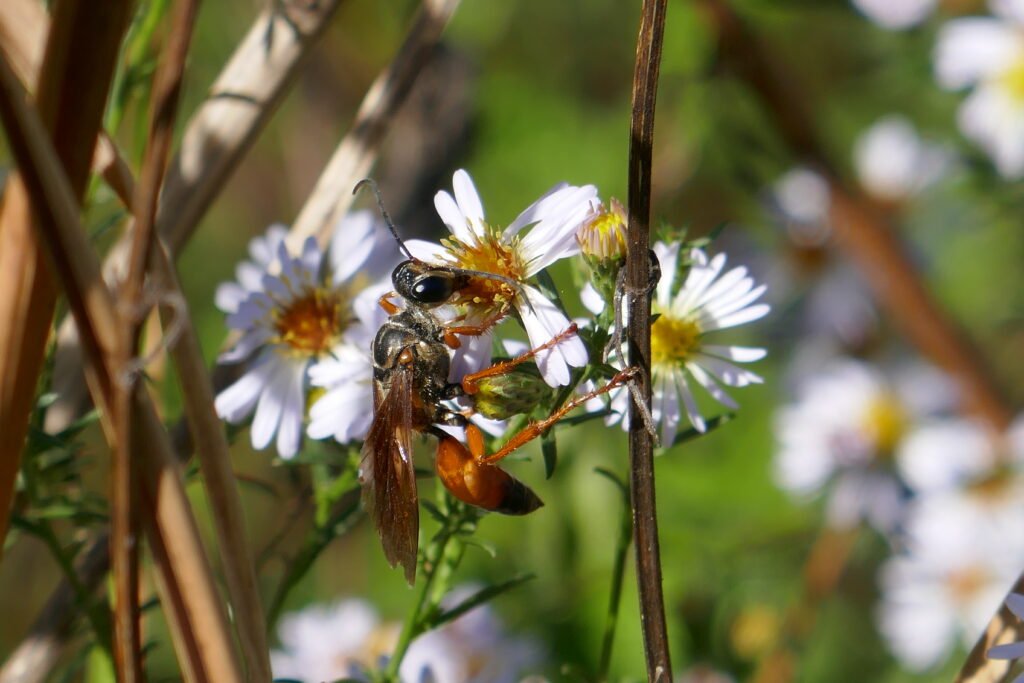
Bees (Apoidea family)
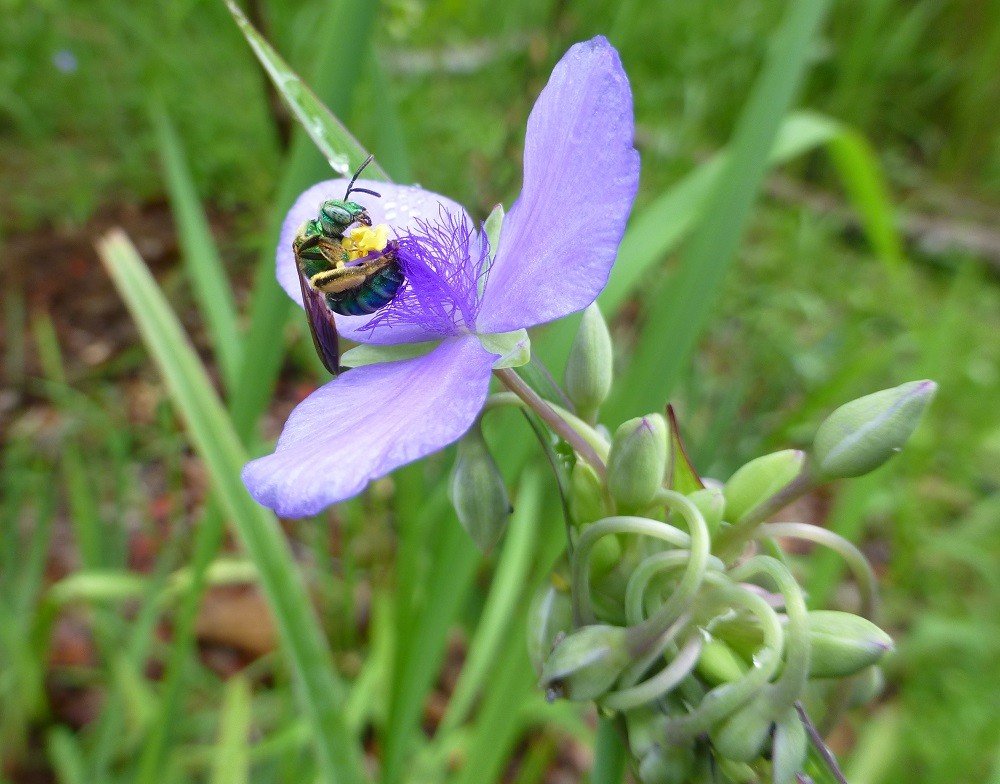
The Virescent Green Metallic Bee (Agapostemon virescens) is a small, 3/8 inch in length, shiny green bee.
The adults drink nectar and the larvae feed on nectar and pollen that is provided in the nest by the adult which she leaves with the deposited egg.
Their preferred habitat is meadows and gardens with sandy soil.
The colony’s nest is built in bare soil, or vertical banks.
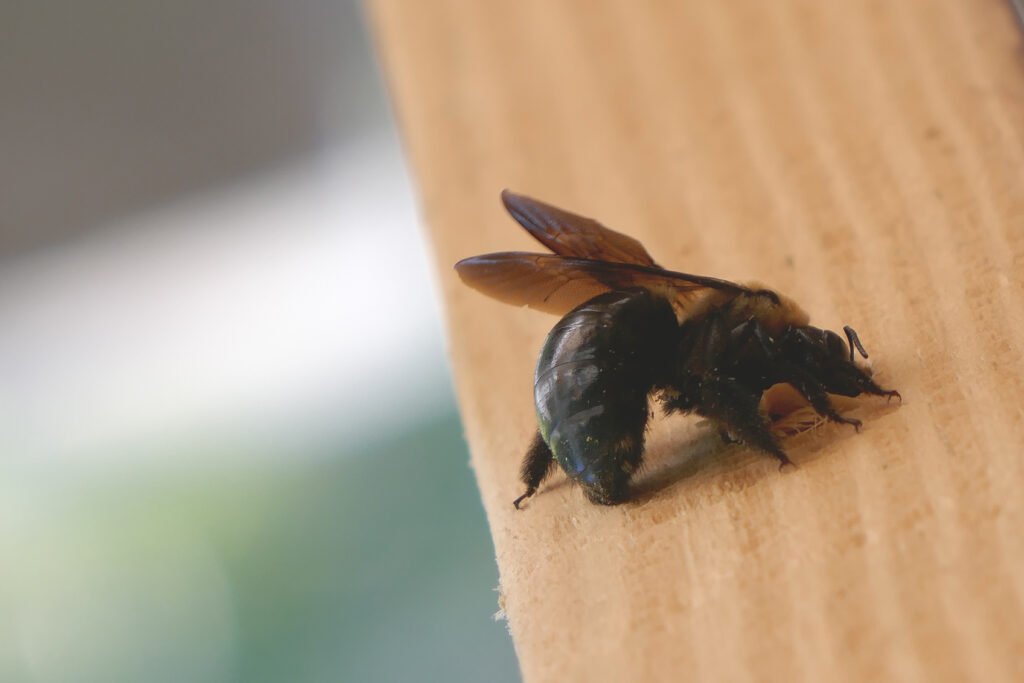
The Southern Carpenter Bee (Xylocopa micans) closely resembles a bumble bee.
The average size is 1 inch in length.
The adults drink nectar and the larva feed on nectar and pollen.
Their preferred habitat is forests and adjacent meadows.
The female chews a tunnel in dry wood and places eggs in partitions that she has constructed with cemented wood chips. She then places a clump of nectar and pollen for the larva to feed on when it hatches.
Long Horned Beetles (Cerambycidae family)
The Notch-tipped Flower Longhorn (Typocerus sinuatus) is an orange beetle with long antennae.
The adults drink nectar and eat pollen.
Their average size is 1/2 in length.
Their preferred habitat is forest and clearings.
The larva feed on decaying wood and tunnel inside to pupate.
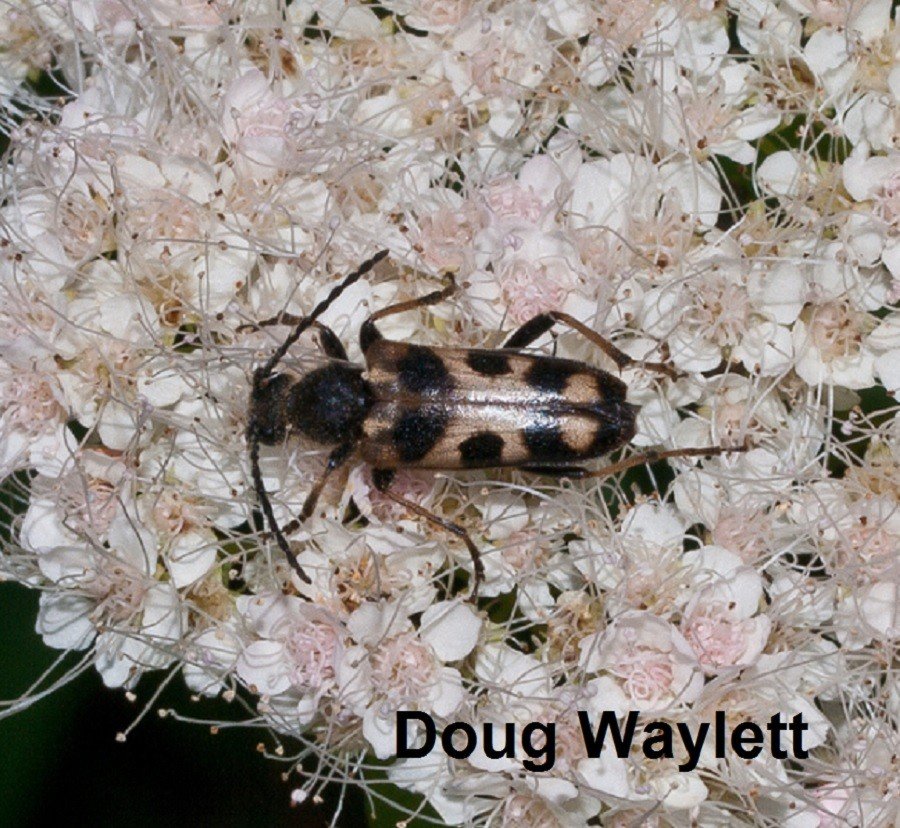
The Elder Borer (Desmocerus palliatus) is a bright orange and black beetle with an average size of 1 inch in length.
The adults feed on pollen.
Their preferred habitat is moist forests and stream edges.
The larva feed on elderberry roots. The eggs are laid on the elderberry stems and the larva burrow into them, progress to the roots, and pupate in the soil.
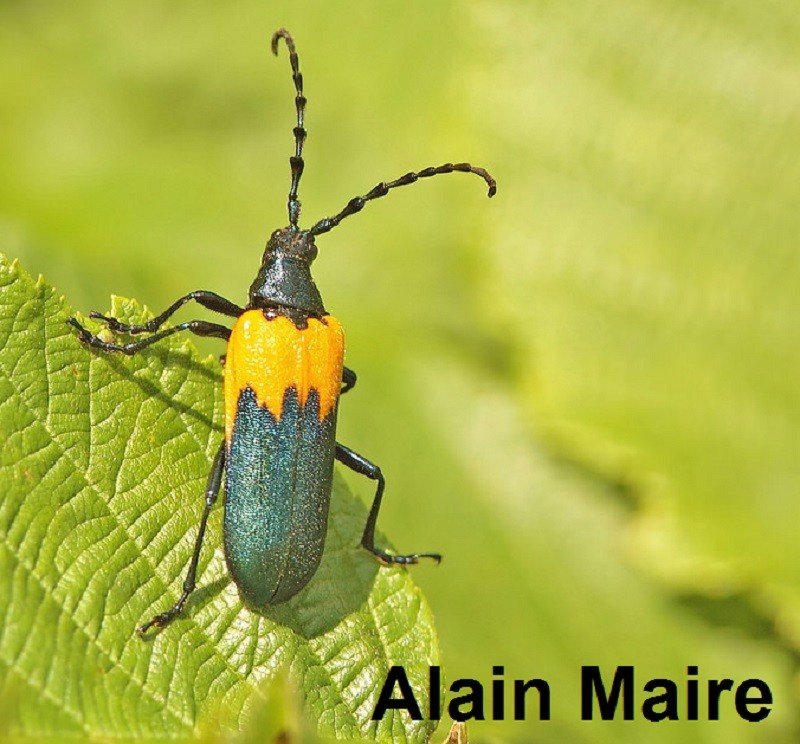
Cuckoo Wasps (Chrysididae family)
The Cuckoo Wasp (Chrysis angolensis).
Cuckoo refers to the way the female wasps lay her eggs in the nests of other unrelated wasp species such as the mud dauber. Cuckoo birds do the same thing so these wasps are named after them.
Many people mistake these wasps for sweat bees which can be brilliantly colored as well, but this gorgeous blue insect is actually a wasp.
They are very small at about half an inch in size. The brilliant blue of this particular species is eye catching and certainly draws your attention to it. They move about rather quickly searching for mud dauber nests to lay their eggs in. The eggs hatch and eat the larva and then the meal that the original female wasp left for her offspring. The adults visit flowers for nectar. They have a heavy armor like exoskeleton that protects them from wasp stings and they also have the ability to curl up into a tiny ball so the wasp can’t sting their more tender midsection.

Mosquitoes (Culicidae family)
The Elephant Mosquito (Toxorhynchites rutilus).
The elephant mosquito is the largest mosquito in the USA at a length of 6 – 7 mm (1/4 an inch). They are beautifully colored with shades of iridescent blue.
Toxorhynchites rutilus is a mosquito that never feeds on blood. Females use sugar from plant sources for the developing eggs. This according to the Florida Department of Health .pdf Mosquitoes and Their Control [link above].
The elephant mosquito never feeds on blood. Both the male and female drink flower nectar.
The female lays eggs on the water surface and looks for small pockets of water that are held in places like bromeliad leaves, pitcher plants and rock pools. As with all mosquitos she will lay eggs in anything that holds water like bird baths, tires, flower pots, etc.
I know people despise mosquitoes, but these two are so beautiful, and large, that I had to include them. Their larvae also eat smaller mosquito larvae which is a good thing.
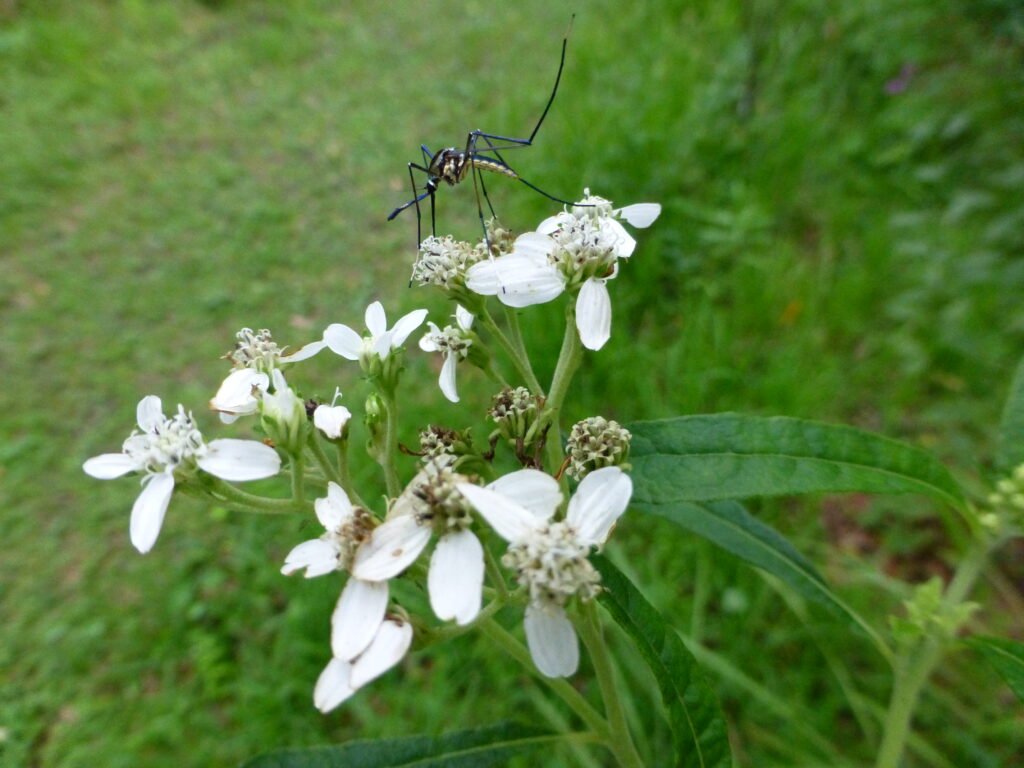
The Gallinipper (Psorophora ciliata).
This extremely large mosquito is nicknamed the gallinipper because it’s been claimed that it takes a gallon of blood when it bites.
Only the female bites animals to suck blood. Both the male and female drink flower nectar. The male is the only one with the feathery antennae.
The female lays eggs on the water surface and looks for small pockets of water that are held in places like bromeliad leaves, pitcher plants and rock pools. As with all mosquitos she will lay eggs in anything that holds water like bird baths, tires, flower pots, etc.
Some sources say this is the largest mosquito in the USA, but at only 6.5 mm (1/4 an inch) it seems to be about the same size as the elephant mosquito which is said to be 6 – 7mm (1/4 an inch).
I know people despise mosquitoes, but this one and the elephant mosquito above are so beautiful, and unusually large, that I had to include them. Their larva also eat smaller mosquito larvae.
Unlike other mosquitoes they are not know to vector any mosquito borne pathogens. This according to the Florida Department of Health .pdf Mosquitoes and Their Control [link above].
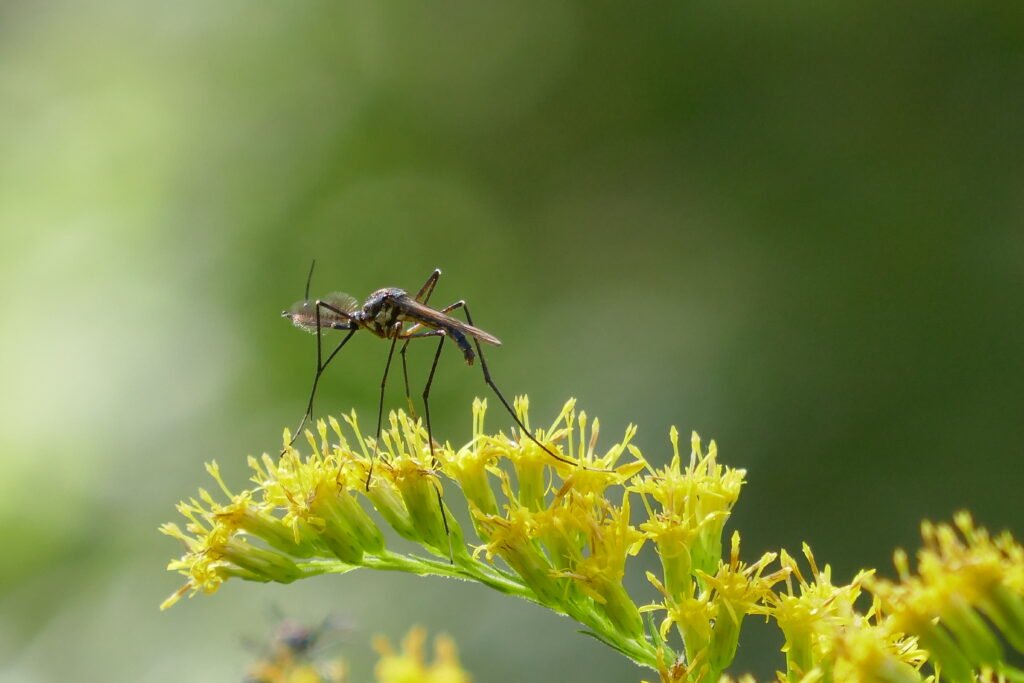
Things You Can Do To Ensure That Your Property & Garden Has Plenty of Pollinators
- Plant native plants that provide nectar and pollen.
- Avoid pesticides – use organic methods!
- Learn to like the bugs!
- Read your field guides and learn their behavior.
- Allow a portion of your property to be wild – ground nesting insects will appreciate the sanctuary.
- Provide stumps or blocks of wood for insects to nest in.
- Just in case you missed it – Don’t use pesticides!
Flowers that are Pollinated by Large Bees
- False foxglove (Agalinis purpurea)
- Prickly poppy (Argemone albiflora)
- Netleaf Leather Flower (Clematis reticulata)
- Dicerandra (Dicerandra linearifolia)
- Marsh Mallow (Kostelezkya virginica)
- Pickerel weed (Pontederia cordata)
- Arrowhead (Sagittaria lancifolia)
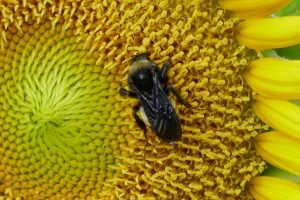
Flowers that are Pollinated by Small Bees
- Butterfly milkweed (Asclepias tuberosa)
- Privet wild sensitive plant (Senna ligustrina)
- Dwarf twinflower (Dyschoriste angusta)
- Florida milkpea (Galactia floridana)
- Pineland morning glory (Jacquemontia curtisii)
- Turkey-tangle fog-fruit (Phyla nodiflora)
- Saw palmetto (Serenoa repens)
- Cabbage palm (Sabal palmetto)
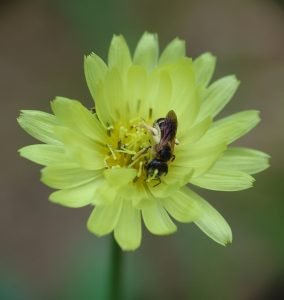
Flowers that are Pollinated by Wasps
- Tough bully (Sideroxylon tenax)
- Yaupon holly (Ilex vomitoria)
- Spotted beebalm (Monarda punctata)
- Black cherry (Prunus serotina)
- Walter’s viburnum (Viburnum obovata)
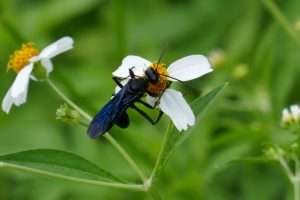
Flowers that are Pollinated by Beetles
- Paw paw (Asimina spp.)
- Button bush (Cephalanthus occidentalis)
- Sweet pepperbush (Clethra alnifolia)
- Winged sumac (Rhus copallinum)
- Goldenrod (Solidago spp)
- Marsh fleabane (Pluchea odorata)
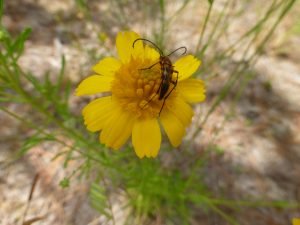
Next Article: Luna Moth
